Don't wanna be here? Send us removal request.
Text
Build Your Own X | Resource ✿


GitHub is literally the best, what the fuck? ヾ(・ω・*)ノ
Anyhoo! This GitHub repository contains a list of tutorials that will guide you to build almost anything in web development using a range of programming language that best suits you!
Let me give you an example:
I click "Game" in the table of contents, it jumps me to the Game section. I wanna use C# so I pick a random C# game tutorial e.g. C#: Learn C# by Building a Simple RPG and it takes me to the site where someone made a whole project page with step-by-step guide to help build that game!


I find this sooooo cool! This can definitely be like a summer project thing you do when no school but you still want to keep yourself busy! I will definitely be doing that this summer ƪ(˘⌣˘)ʃ
Here is the link: Build Your Own X by Danistefanovic ♡
{Have a nice day and happy programming ♡}
3K notes
·
View notes
Photo



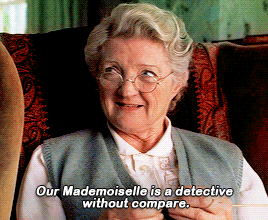
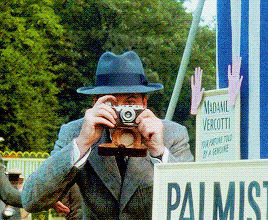
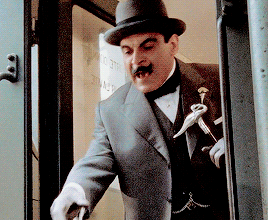
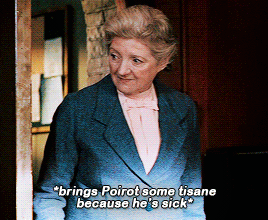
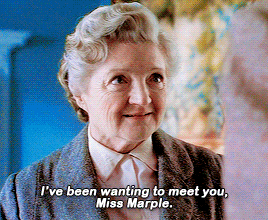

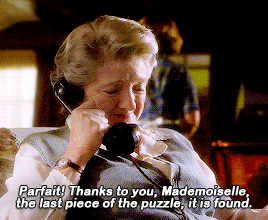
BONUS:

Crossover → Hercule Poirot and Miss Marple solving cases together
David Suchet as Hercule Poirot, Julia McKenzie as Jane Marple
Agatha Christie’s Poirot (1989 - 2013) | Agatha Christie’s Marple (2004 - 2013)
1K notes
·
View notes
Text
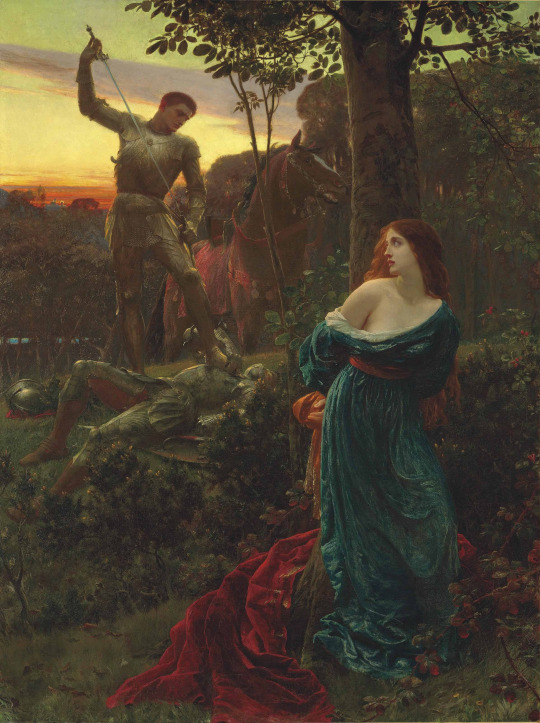
Title: Chivalry Artist: Frank Dicksee (English, 1853-1928) Date: 1885 Genre: historical painting; genre art Period: Victorian Movement: Medievalism Medium: oil on canvas Dimensions: 182.7 cm (71.9 in) high x 136.6 cm (53.7 in) wide Location: private collection
256 notes
·
View notes
Text







BOSTON STRANGLER (2023) dir. Matt Ruskin ↳ What do these three women have in common? Three shadowy patterns of attack. Three knotted loops that bind them together. Strangers to one another in life, they became sisters in death. Each coming to the same horror-filled moment of murder by strangulation. By a killer who came quietly, who was careful in his derangement, and self-possessed enough to lock the door on his way out.
790 notes
·
View notes
Text










Heiko Hellwig: Silicon Cities (2017)
26K notes
·
View notes
Text


pg. 96-97 — a visual history of arms and armor .
926 notes
·
View notes
Note
Hello! May I request a lot of latin forensic terms?
The most popular I am aware lf it's "post-mortem"!
Abet - to assist, encourage, instigate, or support with criminal intent in attempting or carrying out a crime—often used in the phrase, "aid and abet"
Actus reus - the wrongful act that makes up the physical action of a crime
Amicus curiae - one (such as a professional person or organization) that is not a party to a particular litigation but that is permitted by the court to advise it in respect to some matter of law that directly affects the case in question
Compos mentis - of sound mind, memory, and understanding
Corpus delicti - the substantial and fundamental fact necessary to prove the commission of a crime; also: the material substance (such as the body of the victim of a murder) upon which a crime has been committed
Functus officio - of no further official authority or legal effect—used especially of an officer who is no longer in office or of an instrument that has fulfilled its purpose
Habeas corpus - any of several common-law writs issued to bring a party before a court or judge; the right of a citizen to obtain a writ of habeas corpus as a protection against illegal imprisonment
Habeas corpus ad subjiciendum - a writ for inquiring into the lawfulness of the restraint of a person who is imprisoned or detained in another's custody
In flagrante delicto - in the very act of committing a misdeed; red-handed; in the midst of sexual activity
In esse - in actual existence
In loco parentis - in the place of a parent
Indicia - distinctive marks; indications
Mens rea - a culpable mental state, especially: one involving intent or knowledge and forming an element of a criminal offense
Modus operandi - a method of procedure, especially: a distinct pattern or method of operation that indicates or suggests the work of a single criminal in more than one crime
Obiter dictum - an incidental and collateral opinion that is uttered by a judge but is not binding; an incidental remark or observation
Onus probandi - burden of proof; the duty of proving a disputed assertion or charge
Prima facie - at first view; on the first appearance; legally sufficient to establish a fact or a case unless disproved
Pro se - on one's own behalf; without an attorney
Res judicata - a matter finally decided on its merits by a court having competent jurisdiction and not subject to litigation again between the same parties
Ultra vires - beyond the scope or in excess of legal power or authority
Hope this helps. Do tag me, or send me a link to your writing if it does. I would love to read your work!
More: Latin Phrases ⚜ Word Lists
209 notes
·
View notes
Text



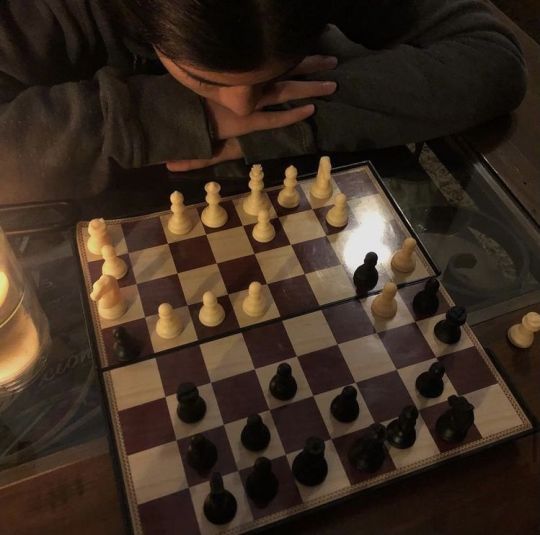
Of chess, it has been said that life is not long enough for it, but that is the fault of life, not chess.
-William Napier
74 notes
·
View notes
Text
Writing Notes: Serial Killer

Serial Killer - a person who methodically murders a substantial number of people over a period of time.
The definition of serial murder varies.
The lowest number of victims is 3 in most cases, although certain investigative agencies move the barometer higher or lower.
Signs of a Serial Killer
Serial killers often share some common traits. Here are just a few to consider:
Childhood troubles: Some of the most prolific serial killers have long histories of brutal child abuse in their pasts. For example, Ottis Toole—convicted of six counts of murder—grew up a victim of incest and violence at the hands of relatives. This is a common element in the backstories of several serial killers. Persistent bedwetting, fire starting, and cruelty to animals during youth can also be harbingers of future serial killing.
Lack of empathy: Serial killers almost always have a total lack of empathy, remorse, or guilt. They see themselves as entitled to torturing and killing their victims, often dehumanizing them in their eventual confessions to law enforcement.
Manipulative personalities: Some serial killers are quite charismatic and manipulative. Ted Bundy wrapped the media around his finger during his trial. H.H. Holmes made a name for himself as a prolific swindler and con man alongside killing dozens of people. Harold Shipman was a well-respected doctor and pillar of his community who killed well over two hundred patients.
Methodical killing style: Most serial killers murder their victims in a methodical, pattern-based fashion. For instance, Moses Sithole of South Africa chose women victims in their twenties who were unemployed. After offering them jobs, he would lead them to one of the remote areas where he committed his crimes.
Motives of Serial Killers
While each serial killer might murder for different reasons, certain motives crop up time and time again. Consider the following:
Hunger for power: Serial killers often murder because of a desire for power. They seek to dominate their victims, not just kill them. Some theorize the worst mass murderers of history (e.g., Adolf Hitler, Joseph Stalin, Mao Zedong, etc.) might have become serial killers if their ascension to power didn’t enable them to enact their violent crime fantasies on a wider scale.
Notoriety: Both serial murderers and spree killers (like mass shooters) often kill in the interest of attention. The Son of Sam killer (David Berkowitz) sent letters taunting New York police. The Zodiac Killer (still unknown) sent cryptic messages about his killings to Bay Area newspapers and law enforcement agencies. Albert DeSalvo, the alleged Boston Strangler, may have turned himself in for even more murders than he actually committed in the interest of greater notoriety.
Psychosis: Many—some would argue all—serial killers are verifiable and literal psychopaths. For instance, murderers like Ed Kemper and Jeffrey Dahmer had troubled histories before they even began killing their victims.
Revenge: Some serial murderers use their killings as an opportunity to seek revenge against the people who wronged them. For instance, a “black widow” (e.g., female serial killer), such as Aileen Wuornos, might murder innocent men or the wrongdoers themselves to feel like they are exacting revenge upon men who brutally mistreated them.
Sadistic pleasure: Serial killers might gain a deranged sense of delight in torturing and murdering their victims. For instance, both Ted Bundy and Gary Ridgway (the Green River Killer) preyed on young women to act out their sadistic sexual fantasies before killing them.
Some Notorious Serial Killers
These are just a few of the worst serial killers in history:
Aileen Wuornos: Although Wuornos argued her killings were in self-defense, juries convicted her of 6 counts of first-degree murder for crimes that occurred between November 1989 and November 1990 in Florida. The state executed her in 2002.
Albert DeSalvo: Despite the fact DeSalvo confessed to being the Boston Strangler, people dispute the credibility of his claims. Authorities associate thirteen female victims with the Boston Strangler. In 2013, experts confirmed DNA evidence linked DeSalvo to the sexual assault and murder of one of those victims.
David Berkowitz: The media called Berkowitz the Son of Sam after he used the phrase in a letter he mailed to New York police before they identified him. He was sentenced to serve 6 life sentences for murdering 6 young women and attempting to kill others.
Ed Kemper: Nicknamed the “Co-ed Killer,” Kemper murdered 10 people, most of them female college students he picked up while they were hitchhiking.
Gary Ridgway: Also known as the Green River Killer, Ridgway killed more than four dozen people, the bodies of whom he tended to deposit in the woods around the Green River in Washington.
Harold Shipman: An English doctor, Shipman killed his female victims by way of lethal injections. A jury convicted him of fifteen murders, although there is evidence he was responsible for the deaths of up to 250 people.
Henri Landru: Nicknamed the “Bluebeard of Gambais,” Landru was a Frenchman who killed at least eleven people between 1914 and 1919. After the jury found him guilty and sentenced him to death, he died by guillotine.
H.H. Holmes: Although convicted of just one murder, Holmes confessed to more than two dozen. Prior to his imprisonment, he was a con artist, responsible for check forgeries, insurance fraud, and other crimes. The state of Pennsylvania hanged him for the killing of Benjamin Pitezel, Holmes’s former business partner.
Jack the Ripper: Authorities associate this unknown person (or persons) with multiple murders in Victorian England. The victims were all women, and all died from violent stabbings.
Jeffrey Dahmer: This US American serial killer, also known as the Milwaukee Cannibal, stalked the Midwest for victims. He preserved and even ate the body parts of those he killed before being apprehended by the police.
John Wayne Gacy: Also known as the Killer Clown, Gacy—a party clown performer— almost exclusively preyed on young men. When law enforcement brought him to justice, the remains they found buried in his house made for one of the most notorious and grisly crime scenes in history.
Ottis Toole: Juries convicted Toole of 6 counts of murder plus arson. He died while in prison in Florida.
Richard Ramirez: This Los Angeles serial murderer attacked almost 20 people and killed at least 13. The media referred to him as the “Night Stalker” before criminologists were able to track down and identify him.
Ted Bundy: Responsible for crimes in Washington, Oregon, Idaho, Utah, and Colorado, Bundy had at least two dozen victims but possibly as many as a hundred. He was responsible for abducting, sexually assaulting, and killing young women across the five states.
Zodiac Killer: Responsible for one of the most notorious killing sprees in US American history, the still unidentified Zodiac Killer was active in and around San Francisco in the late 1960s. The media referred to the unknown male by the name “Zodiac Killer” after he used the term Zodiac in his cryptic messages to Bay Area newspapers and law enforcement agencies.
The Investigation of a Serial Killer
To investigate a serial killer, various levels of law enforcement will work together.
If a local pattern emerges, the relevant police department might coordinate with the Federal Bureau of Investigation (FBI).
If a more disparate geographical pattern of killings crops up, investigators might begin to reach out to other areas about cold cases of a similar ilk.
Investigative task forces might work for years or even decades to identify a serial killer.
They seek to connect separate events over a sustained period of time, as well as to build a psychological profile of the killer.
This helps narrow down the search for the perpetrator.
They then tie together clues left behind to capture the murderer.
Sometimes they’re successful—other times, cases stay cold and mysteries remain unsolved.
History of Serial Killings
When most people refer to the crime sprees of serial killers, they’re thinking of a particularly notorious set of murderers from recent history.
Serial killers have existed throughout all of history, however, in one iteration or another and are not unique to a particular country.
Jack the Ripper, an unknown person (or persons) authorities associate with a series of slayings in Victorian England, is practically synonymous with the term “serial killer.”
Henri Landru (the Bluebeard of Gambais) was a French killer from around the same era.
Source ⚜ More: Notes & References ⚜ Writing Resources PDFs
83 notes
·
View notes
Text
It makes me so happy to see people starting recognizing HOW STRONG of a woman the Virgin Mary was, like yes, her son was her Saviour too, Jesus had to die on the cross to save all of us and she know that had to happen, but Jesus was still HER SON
He was HER BABY, her only baby, the one she felt growing inside of her for nine months, the one that smiled at her as a baby everytime their eyes met, the one who she saw growing up, the one she saw feeling so much wonder everytime he saw something new, the one who she helped learning to walk, the one who made her so proud and she loved SO STRONGLY
AND SHE HAD TO WATCH HIM BEING INSULTED, TREATED AS A CRIMINAL, TORTURED, THE ONE SHE SAW ON THE CROSS
AND SHE COULDN'T DO ANYTHING TO STOP IT
9 notes
·
View notes
Text
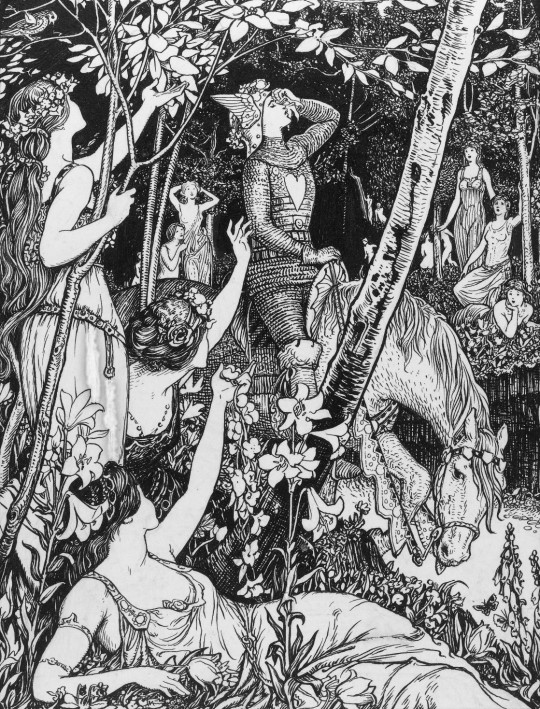
Among the flowers were lovely maidens calling to him with soft voices, from The Fairy of the Dawn for Andrew Lang's The Violet Fairy Book by Henry Justice Ford (1906)
9K notes
·
View notes
Text
Bone Saddle from Bohemia, c.1400-1420 CE: this Medieval saddle is decorated with bone plaques that depict scenes of romance and courtship, with references to sex, pleasure, and chivalry

This saddle was crafted from staghorn, bone, birch bark, rawhide, metal, and limewood. Bone pins and glue were used to fix each plaque to the limewood core of the saddle, and the panels were originally adorned with brightly-colored paints.

The bone plaques are decorated with intricately carved scenes of romance; some of these scenes show women being serenaded by suitors and troubadours, lovers caressing one another, couples exchanging tokens of their affection, and men offering luxury containers in exchange for their lovers' hearts. Squeezed beneath the left flank of the saddle is a scene that depicts two lovers holding hands and gazing at one another, while another scene on the right flank shows a man and woman standing cheek-to-cheek as the woman wraps her arms around the man's back and pulls him to her breast.
Knights, dragons, and monstrous figures are also depicted on several panels.

As the Metropolitan Museum of Art describes:
Romantic and erotic imagery adorned not only the pages of late medieval manuscripts and the vessels of a lady’s private dressing table; these themes were equally suited to the public self-fashioning of European nobles.
Illicit touch and unmediated sight are just two of the carnal senses evoked by this saddle. Tucked between larger figures, troubadours and instrument-bearing grotesques evoke the auditory pleasures of the court, while floral and arboreal motifs conjure the alluring sights, smells, and tastes of a pleasure garden.
On the right tip of the saddle’s pommel, a man pokes his hand into a conical hat as a cheeky reference to the amorous intentions of the embracing couple below. ... Even the shape of the saddle is suggestive. The accentuated curvature of the pommel and the double-lobed cantle (a common feature of Eastern European saddles) emphasize the saddle’s phallic form.

For those viewers bold enough to inspect the saddle’s hidden surfaces, grotesques under the pommel and at the center back of the cantle offer comic relief while also warning against the bestial side of desire.
The morals of late medieval Christianity are primarily embodied on this saddle by Saint George, shown as a knight spearing a dragon on the right side of the pommel. According to hagiographic precedent, the dragon’s defeat secured the safety of a captive maiden, an ideal of feminine purity threatened by the corruption of evil.

Saint George and the dragon and scenes of courtly love dominate the roughly twenty bone saddles that survive from late medieval Europe.
Attached to a limewood core with bone pins and glue, the carved panels probably derive from the pelvic bones of cows or other large animals. The underside of the saddle is lined with hide and birch bark. Although these fragile materials are ill suited for the battlefield or daily use, bone’s off-white color and receptiveness to carving served as the ideal ground for eye-catching carvings and paintings.
Viewers today should remember that the saddle was originally brightly colored with blue, green, and red paint. The saddle was also just one part of a larger ensemble of a horse’s parade armor.
This particular saddle is associated with the court of Wenceslaus IV.

Sources & More Info:
Metropolitan Museum: Bone Saddle
Museum Publication: Prague: the Crown of Bohemia
American Journal of Archaeology: Mediaeval Sculptured Saddle
The Gothic Ivories Project at the Courtauld Institute of Art: Trivulzio Saddle
Central European University: The Art of Love in Late Medieval Bone Saddles (PDF)
97 notes
·
View notes
Text
Arthuriana Quick Bites : Short Reads in 200 Pages or Less
Want to read some Arthuriana but short on time?
A collection of short medieval texts, poems, plays, and short stories and anthologies.
Links are provided to PDF's for free reading or to download. If a book is still in print, a link to where you can purchase will be provided. This post will be updated as necessary.

This post was made in collaboration with and wouldn't have been possible without @queer-ragnelle! The following PDF's are supplied by the Arthurian Preservation Project, which i emplore you to go check out for yourself. My personal reccomendations are bolded and higlighted in pink, while L's reccomendations are in green.
New additions are denoted with a ‼️.
Last updated: 19/5/2025
Medieval Texts
Alliterative Morte Arthure 💖 translated by Richard Scott-Robinson
Erex Saga and Ívens Saga💖 translated by Foster W. Blaisdell and Marianne E. Kalink
Guingamor / Lanval / Tyolet / Bisclaveret by Marie de France translated by Jessie Weston
King Artus translated by Curt Leviant
Morien💖translated by Jessie Weston
‼️ Perceval, Story of Grail 💖by Chrétien de Troyes translated by Nigel Bryant
Peredur 💖 translated by Meirion Pennar
Pulzella Gaia
Roman de Brut by Wace translated by Eugene Mason
The Adventure of Melora and Orlando translated by John R. Harris
The Perilous Graveyard translated by Ross G. Arthur
The Romance of Perceval 💖 translated by Dell Skeels
The Turke and Sir Gawain💖 translated by Dr. Brian Gastle
The Wedding of Sir Gawain and Dame Ragnelle 💖translated by Dr. David Breeden
Sir Launfal by Thomas Chestre
Sir Perceval de Galles / Ywain and Gawain 💖 edited by Mary Flowers Braswell
Short Stories
A Camelot Triptych💖 by Norris J Lacy
From Camelot to China💖 translated by Annegret Oehme
Hunt of the Hart Royal by Cherith Baldry
In the Forest Perilous by Cherith Baldry
The Trial of Sir Kay💖 by Cherith Baldry
The Last Knight of Camelot: The Chronicles of Sir Kay by Cherith Baldry
Kairo-Kō: A Dirge💖 by Natsume Sōseki
Mordred and the Green Knight 💖 by Phyllis Ann Karr
Sir Agravaine💖 by P. G. Wodehouse
The Fortunate Island by Max Adeler
‼️Strange Finds by Georgia Cook @georgiacooked
Poems
Five Arthurian Poems 💖by William Morris (Galahad: A Christmas Mystery my beloved!)
Lancelot💖 by Edwin Arlington Robinson
Merlin by Edwin Arlington Robinson
Tristram by Edwin Arlington Robinson
Maid Avoraine by R. Williams Buchanan
Post-Laureate Idyls & Other Poems💖 by Oscar Fay Adams
Six Ballads About King Arthur by Your Loving Granny
Plays
‼️Guenevere: A Play in Five Acts by Stark Young
Merlin in Love by Aaron Hill
Mordred, A Tragedy 💖 by Henry Newbolt
King Arthur by J. Comyns Car
Lancelot💖 by James Bridie
The Quest of Merlin by Richard Hovey
The Marriage of Guenevere by Richard Hovey
The Birth of Galahad 💖by Richard Hovey
Taliesin by Richard Hovey
The Holy Grail by Richard Hovey
The Misfortunes of Arthur💖 by Thomas Hughes
The Birth of Merlin by William Shakespeare & William Rowley
Vortigern and Rowena by William Shakespeare (Apocryphal)
Screenplays
‼️ Excalibur (1981) Screenplay 💖 by Rospo Pallenberg and John Boorman
Anthologies
Arthurian Tales: Author's Choice by Phyllis Ann Karr
Arthur, The Greatest King - An Anthology of Modern Arthurian Poems by Alan Lupack
‼️ Sword Stone Table: Old Legends, New Voices edited by Swapna Krishna and Jenn Northington
The Camelot Chronicles edited by Mike Ashley
The Chronicles of the Round Table edited by Mike Ashley
The Chronicles of the Holy Grail edited by Mike Ashley
The Pendragon Chronicles edited by Mike Ashley
The Merlin Chronicles edited by Mike Ashley
Invitation to Camelot edited by Parke Godwin
Other Masterposts by L @queer-ragnelle:
Beginner's Guide to Medieval Arthuriana
Hi-Lo Arthuriana
♡ Loathly Lady Master Post ♡

Happy reading! 💕
176 notes
·
View notes
Text


An early Smallsword with an onyx hilt decorated with gold and enamel,
OaL: 27.2 in/69.2 cm
Germany, 1664, housed at the Kunsthistorisches Museum, Vienna.
820 notes
·
View notes
Text
𝚃𝚞𝚝𝚝𝚒 𝚒 𝚏𝚒𝚕𝚖 𝚌𝚘𝚗𝚜𝚒𝚐𝚕𝚒𝚊𝚝𝚒 𝚍𝚊 "𝙷𝚊𝚌𝚔𝚎𝚛'𝚜 𝚖𝚘𝚟𝚒𝚎 𝚐𝚞𝚒𝚍𝚎": 𝚃𝚘𝚋𝚘𝚛, 𝚒𝚕 𝚛𝚎 𝚍𝚎𝚒 𝚛𝚘𝚋𝚘𝚝 (𝟷𝟿𝟻𝟹)
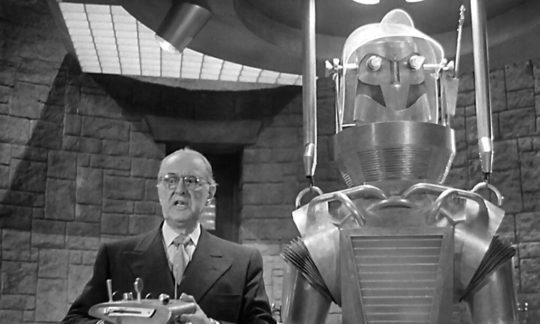
Trama ridotta da Wikipedia: Le maggiori potenze mondiali sono in gara per il primato della conquista dello spazio. Sebbene vengano realizzati nuovi missili sempre più potenti, persistono difficoltà nell'imbarcare esseri umani, sottoposti ai rischi e le incognite del volo verso l'ignoto. Il dottor Harrison, ritiratosi dalla ricerca nazionale aerospaziale e ritenendo più opportuno l'invio di equipaggio non umano, realizza in uno scantinato un robot chiamato Tobor.
"Tobor, il re dei robot" è fondamentalmente un film ottimista; il «fattore umano», che per forza di cose risulta un ostacolo al progresso scientifico, in questo caso rappresentato dalla conquista dello spazio, si affida a una forma di tecnologia estremamente raffinata. L'automa –anzi, il «simulacro elettronico di uomo»– Tobor è ben più che un semplice mezzo per il suo creatore; si può dire che sia quasi una creatura. Nel film viene brevemente commentata la possibilità che un robot possa avere un'emotività, nel senso di una risposta simulata a determinati impulsi esterni dati dall'uomo: Tobor reagisce aggressivamente se aggredito a sua volta, amichevolmente se avvicinato con desiderio di amicizia, e così via. Tuttavia, nel momento in cui, durante il suo "addestramento" spaziale, viene sottoposto a una prova troppo complessa, esso sperimenta quello che nel film stesso viene chiamato «collasso nervoso», a seguito del quale addirittura aggredisce, sebbene con ben pochi risultati, il proprio creatore e il suo giovanissimo nipote. Questa reazione da parte di Tobor, proprio per la visione estremamente positiva della tecnologia che il film descrive e per il tono quasi fiabesco che vuole assumere, non viene accolta con preoccupazione alcuna; del resto, il robot è stato facilmente bloccato grazie a una delle regole primarie, se vogliamo, dell'ingegneria, ossia che prima di avviare un qualsiasi processo bisogna anche sapere come fermarlo, e con rapidità. Ciò nonostante, la possibilità che Tobor possa venire usato per scopi altri rispetto alla ricerca scientifica viene effettivamente nominata; in particolare, nel film i protagonisti americani temono l'uso di una tecnologia tanto avanzata in ambito militare da parte dei propri avversari politici, che si suppone siano i russi.
Lista completa online
0 notes
Text
Title: The First Forensic Case in China: The Farmer’s Sickle and the Flies
In the annals of forensic science, one of the earliest and most ingenious cases of using insects to solve a crime comes from medieval China. This story, recorded in a historical text from the Song Dynasty, showcases the remarkable use of forensic entomology to uncover the truth.
The Crime Scene
The case unfolded in a rural village where a farmer was found murdered, his body slashed repeatedly with what appeared to be a sickle, a common tool used for harvesting rice. The local magistrate, faced with the challenge of identifying the murderer, devised a clever plan to use the natural behavior of insects to solve the crime.
The Investigation
The magistrate gathered all the villagers who owned sickles and instructed them to place their tools on the ground in a designated area. He then stepped back and waited. Within minutes, blowflies, attracted by the scent of blood, began to swarm around one particular sickle. The flies, with their keen sense of smell, were drawn to invisible traces of blood and tissue that remained on the blade, even after the murderer had attempted to clean it.
The Confession
The owner of the sickle, realizing that the flies had exposed his crime, broke down and confessed. The magistrate, using the natural behavior of the blowflies, had successfully identified the murderer without relying on human testimony or physical evidence alone. This case marked the first documented use of forensic entomology in history.
The Legacy of Song Ci
A scholar named Song Ci documented this groundbreaking case in a book that laid the foundation for modern forensic science. His meticulous observations and detailed instructions on how to conduct autopsies and investigate crimes have been revered for centuries. Song Ci emphasized the importance of personal examination, accurate documentation, and the use of natural evidence to avoid miscarriages of justice.
The Importance of Forensic Entomology
This case highlights the significance of forensic entomology, the study of insects and their role in criminal investigations. Blowflies, in particular, are known for their ability to detect the scent of decomposing bodies within minutes of death. By studying the life cycle and behavior of these insects, forensic entomologists can estimate the postmortem interval (PMI), or the time since death, which is crucial in solving crimes.
Conclusion
The story of the farmer’s sickle and the flies is a testament to the ingenuity of early Chinese investigators and the enduring principles of forensic science. It serves as a reminder that even in the absence of modern technology, careful observation and the use of natural evidence can lead to justice. This historical case remains a cornerstone of forensic science, inspiring generations of investigators to seek truth through meticulous examination and scientific rigor.
13 notes
·
View notes
